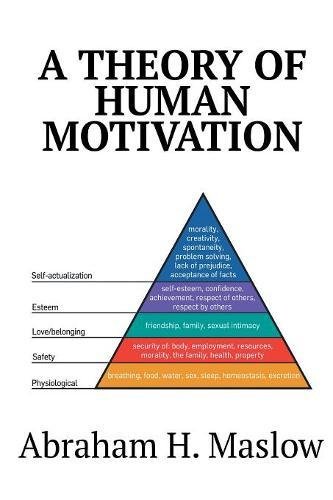
This is the article in which Maslow first presented his hierarchy of needs. It was first printed in his 1943 paper “A Theory of Human Motivation.” Maslow subsequently extended the idea to include his observations of humans’ innate curiosity. His theories parallel many other theories of human developmental psychology, some of which focus on describing the stages of growth in humans. Maslow described various needs and used the terms “Physiological, Safety, Belongingness and Love, Esteem, Self-Actualization and Self-Transcendence” needs to describe the pattern that human motivations generally move through. Maslow studied what he called exemplary people such as Albert Einstein, Jane Addams, Eleanor Roosevelt, and Frederick Douglass rather than mentally ill or neurotic people.

Must read to learn self and others. The book to read for ths serioulsy interested in the individual and what drives him. A group is composition of many individuals with similar drives and goals therefore understanding the severity of the contentious world we live in makes more sense than just the chaos we see. The understanding of such may lead to a solution. If not, we have yet to see the worst of it.
Informative paper As highlighted by many this is a “paper”, not a book and I valued it as such.I found it to be an adequate and informative springboard from whence to get ideas for further in depth study and readings.As far as I am concerned, it has achieved it’s purpose.
It’s short, sweet, and to the point. It’s short, sweet and to the point. It’s 15 pages long, but filled with some valuable ideas. I knew some background on Maslow’s Hierarchy of Needs, but it was good to read the original publication. The ideas have definitely found their way into my worldview.I’d recommend this to anyone in search of a higher understanding of himself or herself or others.